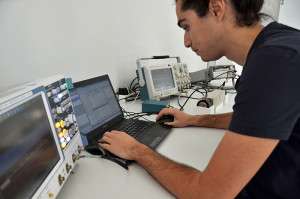Non-invasive analysis of damages to materials based on advanced signal processing techniques

Researchers at the Universitat Politècnica de València have developed a non-invasive means of determining the general state of repair of all kinds of materials in real time, which will help avoid potential safety issues.
The method is based on advanced signal processing techniques and analyses the determinism of signals obtained from the ultrasonic inspection of the materials being tested. Variations in this parameter are indicative of possible damage. By running different frequency ranges, it is possible to know the internal structure of the material and quantify the extent of the damage much more precisely than traditional techniques,
Patented by the UPV, this technique is more competitive than those currently in use, such as measuring speed and attenuation. It has several advantages, including the assessment of overall damage to a material. Additionally, the measurement parameter is normalised between 0 and 1, making it easier to understand the results.
It has multiple possible applications, such as in aeronautics, and naval and motor engineering for the continuous monitoring of fuselage. In this sector, given the high loads being carried, as well as fatigue cycles, and sudden temperature and pressure changes, it is necessary to periodically check the state of the hulls, airplane wings, car bodyworks, etc.
Furthermore, in the field of civil engineering and construction, this new method can be used to detect damages in bridges, inspect pillars and resistant elements in buildings, and assess defects in constructions affected by natural disasters, or corrosion in the marine environment, etc.
Other possible fields of application include state control of industrial sites, the inspection of energy transportation systems, such as oil or gas pipelines, and even quality control for 3D printing parts.
This invention also contributes to the evolution of non-invasive tests, making them independent of both the material being inspected and the calibration of the unit.
Provided by Asociacion RUVID



















